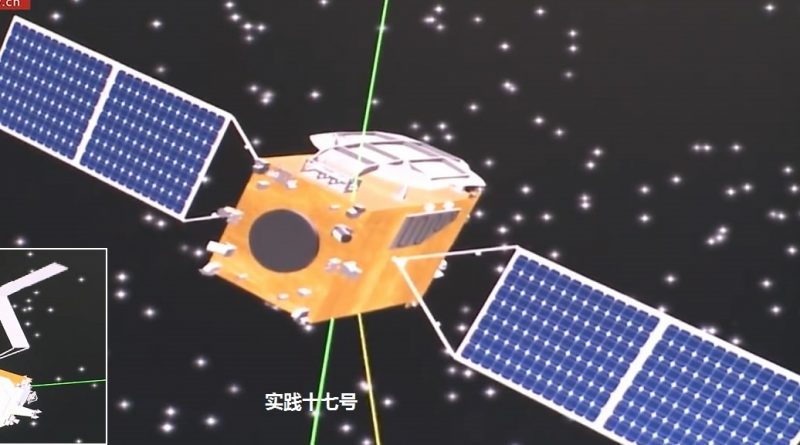China’s Shijian-17 Satellite settles in Geostationary Orbit for Experimental Mission
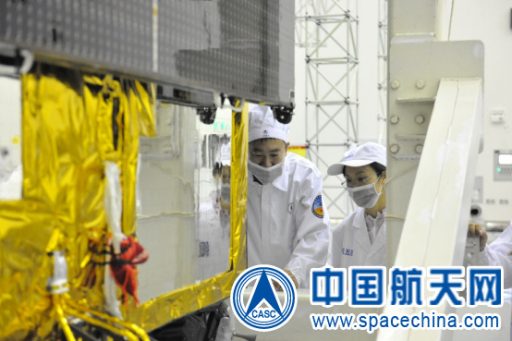
China’s Shijian-17 satellite has reached its destination in Geostationary Orbit after a successful launch on the inaugural Long March 5 rocket and two weeks of orbital drifting until settling in its operational position.
Long March 5 – China’s new heavy lifter – lit up the night over Hainan Island on November 3, lifting off after a dramatic launch countdown that went right down to the wire with liftoff actually occurring three minutes after the formal launch window expired. Powered by a dual-engine cryogenic core stage plus four boosters each with two Kerosene-burning engines, Long March 5 was lifted with an initial thrust of 1,078 metric ton force – swinging to the south-east to head directly for a Geostationary Orbit.
The boosters fired for 173 seconds before dropping away with the twin engines on the core continuing to burn just shy of eight minutes followed by a six-minute burn of the cryogenic second stage to lift the stack into a Low Earth Parking Orbit.
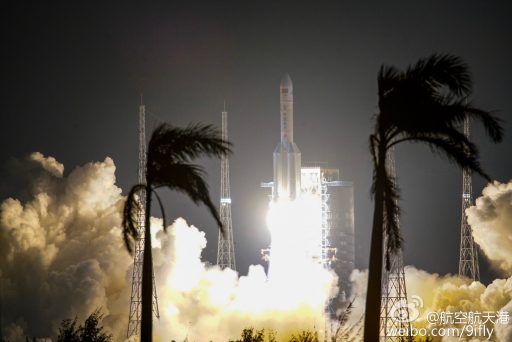
Next, the second stage re-lit while passing over the equator to place the stack into a sub-GTO-type orbit, however, the stage encountered a performance hit and delivered the Yuanzheng-2 upper stage to a slightly lower than planned orbit.
The YZ-2 upper stage immediately ignited its hypergolic engine to finish lifting the stack into a nominal Geostationary Transfer Orbit, extending its supplementary burn to make up for the performance shortfall encountered earlier – using up surplus performance that was available on this particular mission.
Orbital tracking showed the combined YZ-2/Shijian-17 stack in a 212 by 35,803-Kilometer transfer orbit inclined 19.5 degrees – set for a coast phase of over five hours to reach the peak of the elliptical orbit for a lengthy burn of 17.5 minutes to circularize the orbit. Separation of the Shijian-17 satellite took place six hours and 14 minutes into the flight.
The arrival of Shijian-17 and YZ-2 in a Geostationary Drift Orbit was closely monitored by U.S. Space Command that tracks all sizeable objects in orbit as well as Analytical Graphics, Inc.’s (AGI) Commercial Space Operations Center (ComSpOC) which demonstrated its commercial space situational awareness services with this launch.
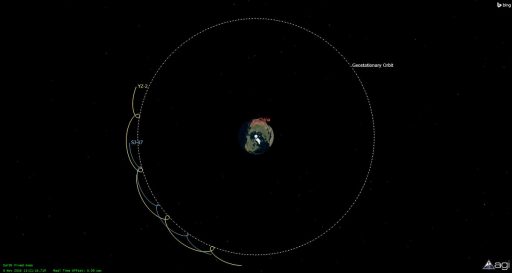
Yuanzheng-2 inserted itself and Shijian-17 into a drift orbit with an apogee above the Geostationary Belt and a low point matching the GEO altitude. According to ComSpOC, one of the two objects was brighter than the other and was found to be tumbling – likely representing the discarded YZ-2 stage which remains in an orbit of 35,644 by 39,969 Kilometers, inclined 0.44 degrees which means it regularly dips into the Geostationary Belt of satellites, its position above the ground drifting 25 degrees west per day.
Shijian-17 continued flying in tandem with YZ-2 with a drift rate of around 20deg/day until 1:53 UTC on November 10 when it made a 27.5-meter per second in-track burn to lower its apogee and reduce its drift to under 10deg/day. The magnitude of the burn indicates it was performed by a chemical engine instead of the electric engines that are to be tested on SJ-17 and are likely to be used for smaller maneuvers and stationkeeping.
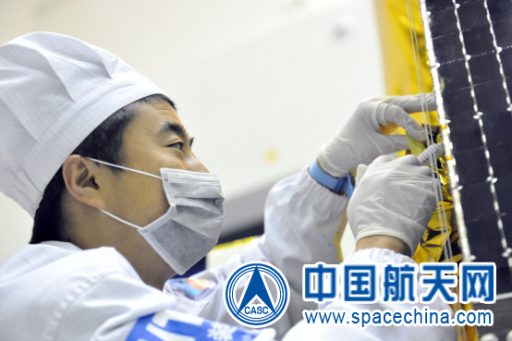
Another pair of maneuvers on November 11 – the first at 2:30 with a delta-v of 23m/s and a 1.3m/s burn at 11:30 UTC – placed Shijian-17 into Geostationary Orbit. Current orbital data shows the satellite positioned at 162.9 degrees East, fully stabilized with a drift under 0.01 deg/day.
According to official Chinese media, the objectives of the Shijian-17 mission are several-fold, demonstrating a number of new technologies for future introduction into operational satellite platforms.
Built and funded by the China Academy of Space Technology, SJ-17 weighs in at four metric tons and is based on the advanced DFH-4S satellite bus.
The satellite features quadruple-junction Gallium-Arsenide solar cells with enhanced efficiency compared to the triple-junction cells that are currently in operational use by most spacecraft. Also, the satellite’s chemical propulsion system is testing green propellant for the first time on a large Chinese satellite, using Ammonium Dinitramide (ADN) propellant which can act as a substitute for Hydrazine while also offering an increase in performance.
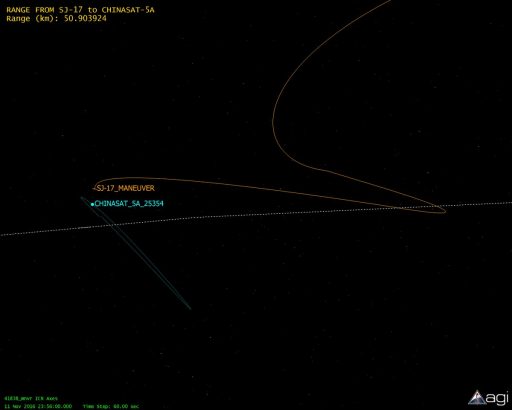
HEP-100MF Hall Effect Thrusters are employed by the satellite for stationkeeping in Geostationary Orbit as well as maneuvering to different orbital positions in support of its experimental mission. The satellite also introduces structural components made from composite materials that are lighter than metal load-bearing parts in use on the previous DFH bus generations.
Shijian-17 will be tasked with communications services, a demonstration of satellite-based navigation in the high-orbit regime (using side lobe signals from China’s Beidou nav satellites), and finally complete a demonstration of an optical-sensing payload to observe space debris at high altitude. The optical sensor can also be used for Space Situational Awareness, making close approaches to operational satellites to study their appearance and from that determine their purpose.
It remains to be seen whether SJ-17 will frequently maneuver in orbit to link up with other satellites to put its optical-sensing payloads to use in identifying foreign spacecraft. At present, the satellite is located in close proximity to the ChinaSat-5A communications satellite which resides at 163.06 degrees and may serve as the initial target for an optical study.

